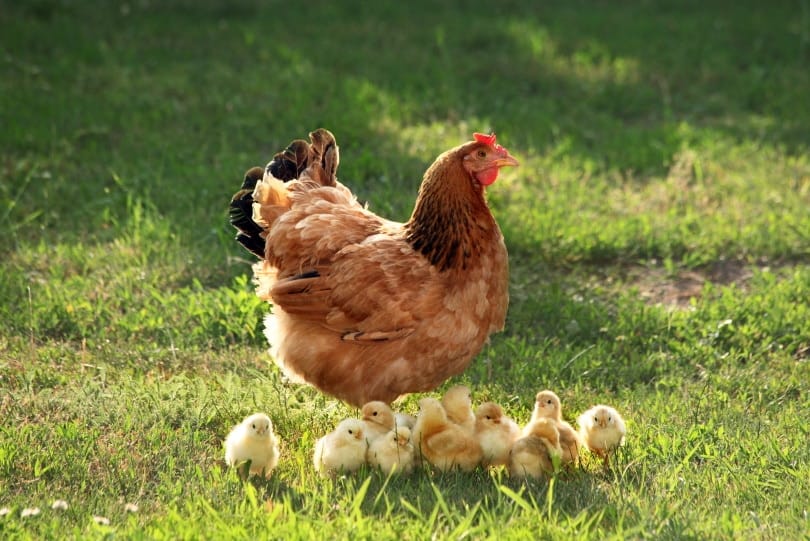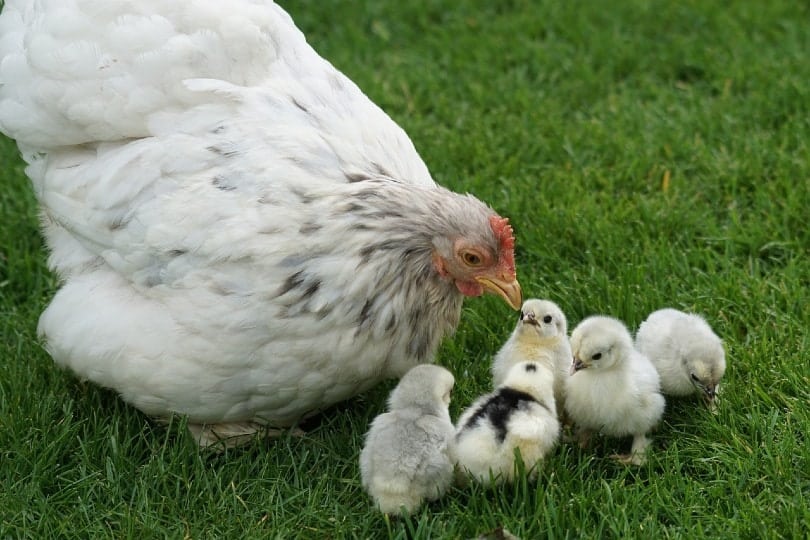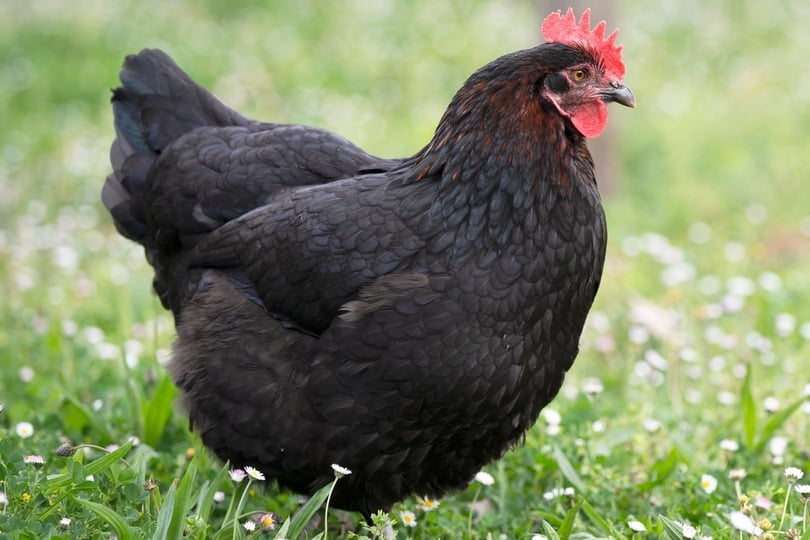Approved by Dr. Luqman Javed
Unlike mammals, chickens do not have nipples because they do not nurse their young. In fact, since birds are not mammals, baby chicks do not need to feed on milk once they come out of their shells. But how do hens feed their chicks? Among the 10,000 or so species of birds that exist, are there any that produce milk for their offspring? Find out the answers to these questions and more by reading on!

Why Do Chickens Have Breasts But No Nipples?
When you eat delicious chicken breast, you are actually eating that bird’s pectoral muscle. And since the pectoral muscles of chickens are positioned in the same place as human breasts, they are called that way. However, poultry “breasts” do not have mammary glands for producing milk as mammals do. Since birds do not produce milk to feed their young, they do not need nipples.
In short, the term “breast” used to designate that part which is eaten from chickens does not have the same meaning as for mammals.

Do Chickens Breastfeed?
No, chickens cannot breastfeed their chicks. Chickens do not have nipples, therefore, they are unable to breastfeed their chicks. In addition, hens have no mammary tissue, glands, or milk duct as is the case with female mammals.
Chickens do, however, use their breasts to incubate their eggs. When hens are broody, they remove the feathers covering their breasts and tend to sit as low and as flat as possible on their eggs. The breast muscle is the primary source of heat for the incubating chicks. Newborn chicks also rely on the warmth provided by the hen’s breast to dry faster and not get chilled (they are born somewhat damp). Chicks have very poor thermoregulation and will often seek warmth under a hen (near her breasts) when they feel cold.
Another function of the chicken’s breast is protection for their underlying organs. For meat-producers, the breast is the largest cut of meat; however, for laying birds or chickens that aren’t meat-producers, the breast is often proportionally sized to the rest of their body.
How Do Mother Birds Feed Their Babies?
When the chicks are born, they do not need to eat or drink for up to 48 hours because they have absorbed the yolk sac before emerging from their shells. The yolk sac is what remains of the yolk of the egg at the time of birth. This allows the hen time to focus on her hatching brood without having to worry about the ones being born first going hungry.
If chicks hatch in an incubator, they will eat the food provided to them (usually in the form of crumble). But, on the other hand, since hens are unable to provide milk to their chicks, they feed their chicks similar food to that which they eat on their own.
Hens have a distinct call for their chicks, which chicks instinctively recognize and imprint to. A hen will lead her chicks to food and water but will rarely feed them directly. Instead, she encourages them to feed by pecking at food sources and making a call to alert her chicks that she’s found food for them.

What Is Crop Milk?
Although milk production and the nursing of young are generally considered to be the primary characteristic of mammals, some bird species are surprisingly endowed with a similar ability as well.
The milk produced in this way is called crop milk because it is made in the crop, a small pouch in the digestive system of birds where food reserves are accumulated before passing into the proventriculus. For example, in pigeons, during incubation, the cells that line the inside of the crop are transformed under the effect of a hormone, prolactin, and compose a mixture thicker than the milk of mammals, which has the consistency of cheese. Interestingly, prolactin is the same hormone that stimulates milk production in mammals.
Even more interesting is that in some birds, only one parent produces this milk. For example, in penguins, only the male produces crop milk.
Do All Birds Produce Crop Milk?
Not all birds are able to produce crop milk: only pigeons and doves, flamingos, and males of some species of penguin. And unlike mammals, milk does not come from the udders but from the crop, as mentioned above.
Udder Versus Crop: What’s the Difference?
In anatomy, the udder is the fleshy part of female mammals, especially ruminants. The udder is the functional equivalent of a breast. This is where the milk is produced. The udder, which hangs below the animal, contains one or more pairs of mammary milk-secreting glands, distributed either as isolated pairs or in varying numbers along cords positioned symmetrically on the ventral part of the body. The number of mammary gland pairs varies among species.
- You might also be interested in: When Can Baby Chickens Go Outside? Guide to Raising Baby Chicks
Bonus: What About the Platypus?
The platypus is a very strange animal. Although they lay eggs, they are considered a mammal, or more precisely, a monotreme. But unlike those of birds, their eggs do not contain the reserves to feed the young. Instead, babies hatch quickly and are then “breastfed” by the mother. Though the platypus does have mammary glands, they lack teats. Therefore, they feed their young by letting the milk flow through the skin; then, the baby just needs to lick the milk from the mother’s hairs!

Final Thoughts
Chickens do not have nipples because they are not mammals; they do not make milk to nurse their young. However, there are a few species of birds that produce crop milk which is then fed to the chicks by regurgitation. In any case, nipples are nonexistent in all species of birds, whether they produce milk or not.
Featured Image Credit: ynoclub, Shutterstock
